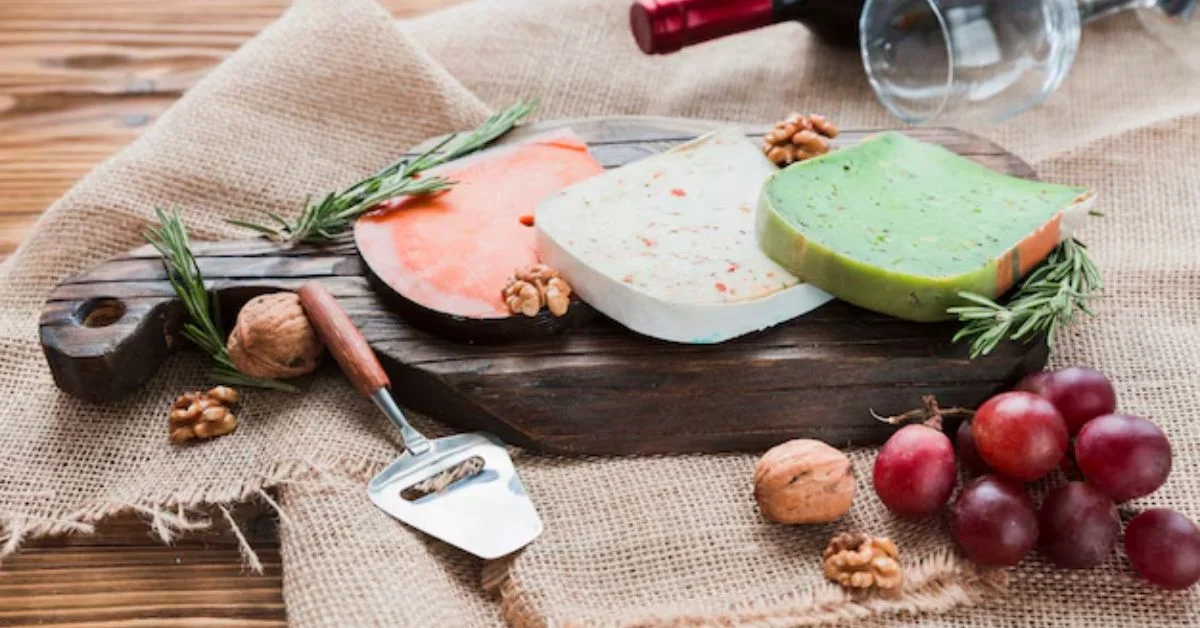When it comes to the world of wine, sweet white wines hold a special place in many hearts—and glasses. Their delightful flavors and versatile pairings make them a favorite among both casual drinkers and connoisseurs alike. Whether you’re celebrating a special occasion or simply unwinding after a long day, sweet white wine can elevate any moment.
But what exactly defines sweet white wine? Is it just about sugar content, or is there more to the story? As we dive into this comprehensive guide, you’ll discover everything from flavor profiles to essential pairing tips that will enhance your tasting experience. So pour yourself a glass and join us on this delicious journey through the enchanting realm of sweet white wines!
Wine Sweetness Chart
Understanding wine sweetness can be a game-changer for choosing the right bottle. A wine sweetness chart categorizes wines based on their sugar content, helping you navigate from bone-dry to lusciously sweet options. This visual guide gives you a clearer perspective on what to expect in terms of taste.
At one end of the spectrum, you’ll find dry wines with little to no residual sugar—typically less than 1 gram per liter. These often feature crisp acidity and bright flavors. As you move along the scale, semi-dry wines introduce subtle hints of sweetness that can enhance fruitiness without overwhelming your palate.
Sweet white wines sit prominently near the top of this chart, boasting higher sugar levels ranging from 30 grams per liter and beyond. Varieties like Riesling or Moscato fall into this category, offering lush notes that tantalize the taste buds.
It’s also important to remember that perception plays a crucial role in how we experience sweetness in wine. Factors such as acidity and tannins can influence our interpretation, making some dry wines feel sweeter while others might surprise us with their dryness despite higher sugar content.
Why Some Dry Wines Taste “More Dry” Than Others
The perception of dryness in wine goes beyond residual sugar content. It can be influenced by several factors, including acidity levels and tannins. High acidity can create a sharper taste that tricks the palate into sensing more dryness, even if there’s a hint of sweetness present.
Tannins also play a crucial role; they are compounds found mainly in red wines but can appear in certain white varieties too. A higher tannin content often leads to astringency, which enhances the perception of dryness. This interplay between sweetness and bitterness creates an intricate balance that varies from one wine to another.
Another aspect is the winemaking process itself. Techniques such as malolactic fermentation soften acidity, leading some dry wines to feel creamier or rounder rather than starkly dry. Similarly, oak aging can add layers of flavor complexity that affect how dryness is perceived on the palate.
Individual taste preferences cannot be overlooked. Personal experiences shape how we interpret flavors and sensations in wine—what feels “dry” for one may not for another based on unique palates and memories associated with those tastes.
Intro to White Wine | Best Types & Benefits of Dry & Sweet
White wine is a versatile and delightful category that appeals to a wide range of palates. It can be crisp and refreshing or rich and complex, depending on the grape variety and winemaking process. The two primary types are dry and sweet white wines, each offering unique qualities that cater to different tastes.
Dry white wines are often characterized by their clean flavors with little to no residual sugar. Varieties like Sauvignon Blanc or Chardonnay provide bright acidity, making them perfect for pairing with seafood or light salads. Their bold flavor profiles make them a staple for many wine lovers.
On the other hand, sweet white wines delight those who prefer a hint of sweetness in their glass. Riesling and Moscato are popular choices known for their fragrant aromas and luscious flavors. These wines not only complement desserts but also balance spicy dishes beautifully.
Both dry and sweet whites come with numerous health benefits when consumed in moderation. They contain antioxidants that may contribute positively to heart health while allowing you to enjoy various culinary experiences through thoughtful pairings.
Examining the Complex Flavor Profiles of Dry and Sweet White Wine Varieties for Enthusiasts of All Expertise Levels
When it comes to white wine, the flavor profiles can be incredibly diverse. Dry varieties often present crisp and refreshing notes. You might encounter citrus fruits like lemon or lime, along with herbal undertones that create an invigorating experience. The acidity plays a crucial role here, heightening those zesty flavors while keeping the palate clean.
On the other hand, sweet white wines offer a different journey altogether. These wines usually embrace lush fruitiness—think ripe peaches or honeyed apricots. Some may even have floral aromas that entice you right from the first sip. Their sweetness can range from light and playful to rich and decadent.
Enthusiasts at any level will appreciate how these profiles evolve with temperature changes and aeration. A chilled dry wine can feel remarkably different as it warms up in your glass; additional layers of complexity emerge over time. Sweet whites, too, reveal hidden depths when allowed to breathe.
Understanding these nuances not only elevates your tasting experiences but also enriches conversations about wine with fellow enthusiasts—no matter their expertise level.
Casa Loce’s Opinion on the Different Flavor Profiles of Dry and Sweet White Wine Varieties
Casa Loce brings a unique perspective to the conversation about dry and sweet white wines. They emphasize the importance of understanding how each wine can express different characteristics based on its origin, grape variety, and winemaking techniques. This is particularly true when comparing the vibrant zestiness of a Sauvignon Blanc with the lush sweetness found in late-harvest Rieslings.
Their team encourages wine enthusiasts to explore beyond their usual preferences. For instance, while some may gravitate towards drier options like Chardonnay for food pairings, others might discover that a lightly sweet Moscato complements desserts beautifully without overpowering them.
Flavor profiles are not just about sweetness but also acidity and aroma. Casa Loce believes that balancing these elements creates an experience rather than simply tasting alcohol. A well-crafted sweet white wine should tantalize your palate with notes ranging from honeyed apricot to tangy citrus.
By encouraging experimentation among drinkers, Casa Loce hopes everyone finds joy in discovering how various flavors harmonize in both dry and sweet varieties—a delightful journey worth embarking upon every time you pour a glass.
Exploring Sweet White Wine Varieties
Sweet white wines offer a delightful spectrum of flavors that can satisfy any palate. From the luscious sweetness of Riesling to the honeyed notes found in Muscat, each variety brings something unique to the table. These wines are often characterized by their fruity aromas and vibrant acidity, making them an appealing choice for both casual drinkers and connoisseurs alike.
One popular option is Sauternes, a luxurious dessert wine from France. Its rich profile includes apricot, honey, and subtle spice undertones. Another favorite is Gewürztraminer, known for its aromatic qualities resembling lychee and rose petals. This varietal pairs beautifully with spicy dishes or creamy cheeses.
For those who enjoy sparkling options, Moscato d’Asti shines with its light effervescence and sweet peach flavors. It’s perfect for celebrations or as a refreshing aperitif on warm days.
Consider Tokaji Aszú from Hungary—a complex blend of dried fruit flavors layered with hints of citrus zest. Each sip transports you through its rich history while tantalizing your taste buds with sweetness that lingers just right.
Pairing Tips for Different Palates
Pairing sweet white wine with food can elevate your dining experience. For those who enjoy a sweeter palate, consider pairing Riesling or Moscato with spicy Asian dishes. The wine’s natural sweetness balances the heat, creating harmony on the plate.
If you prefer a more balanced approach, opt for Sauvignon Blanc alongside fresh salads and goat cheese. Its crisp acidity complements the greens while enhancing the creamy texture of the cheese without overwhelming your taste buds.
For dessert lovers, try serving a late harvest Gewürztraminer with fruit tarts or crème brûlée. The luscious notes in these wines amplify sweet flavors and create an indulgent finale to any meal.
Adventurous palates might explore pairing sweet white wines like Sauternes with savory options such as foie gras or blue cheese. This unexpected combination highlights how contrasting flavors can work together beautifully, leaving you craving another sip and bite.
Enhancing Your Wine-Tasting Skills
Enhancing your wine-tasting skills can transform how you enjoy sweet white wine. Start by using a proper glass; the shape can influence aroma and flavor perception. Take time to observe the color, as it often hints at the wine’s age and sweetness level.
When tasting, engage all your senses. Swirl the wine in your glass to release its bouquet before taking a gentle sniff. Focus on identifying different aromas—fruity notes, floral hints, or even subtle spices may emerge.
As you sip, let the wine linger on your palate. Pay attention to its texture and balance of sweetness versus acidity. This can help you appreciate why some sweet wines are beloved while others might not suit your taste.
Consider keeping a tasting journal where you note down flavors and impressions for each bottle sampled. This practice enhances memory retention and helps clarify what styles resonate with you most.
Join local tastings or online forums to expand your knowledge base further. Engaging with fellow enthusiasts introduces new perspectives that could reshape your appreciation of sweet white wines entirely.
The journey into understanding these delightful varieties is ongoing; embrace it fully as an adventure filled with exploration and discovery.









